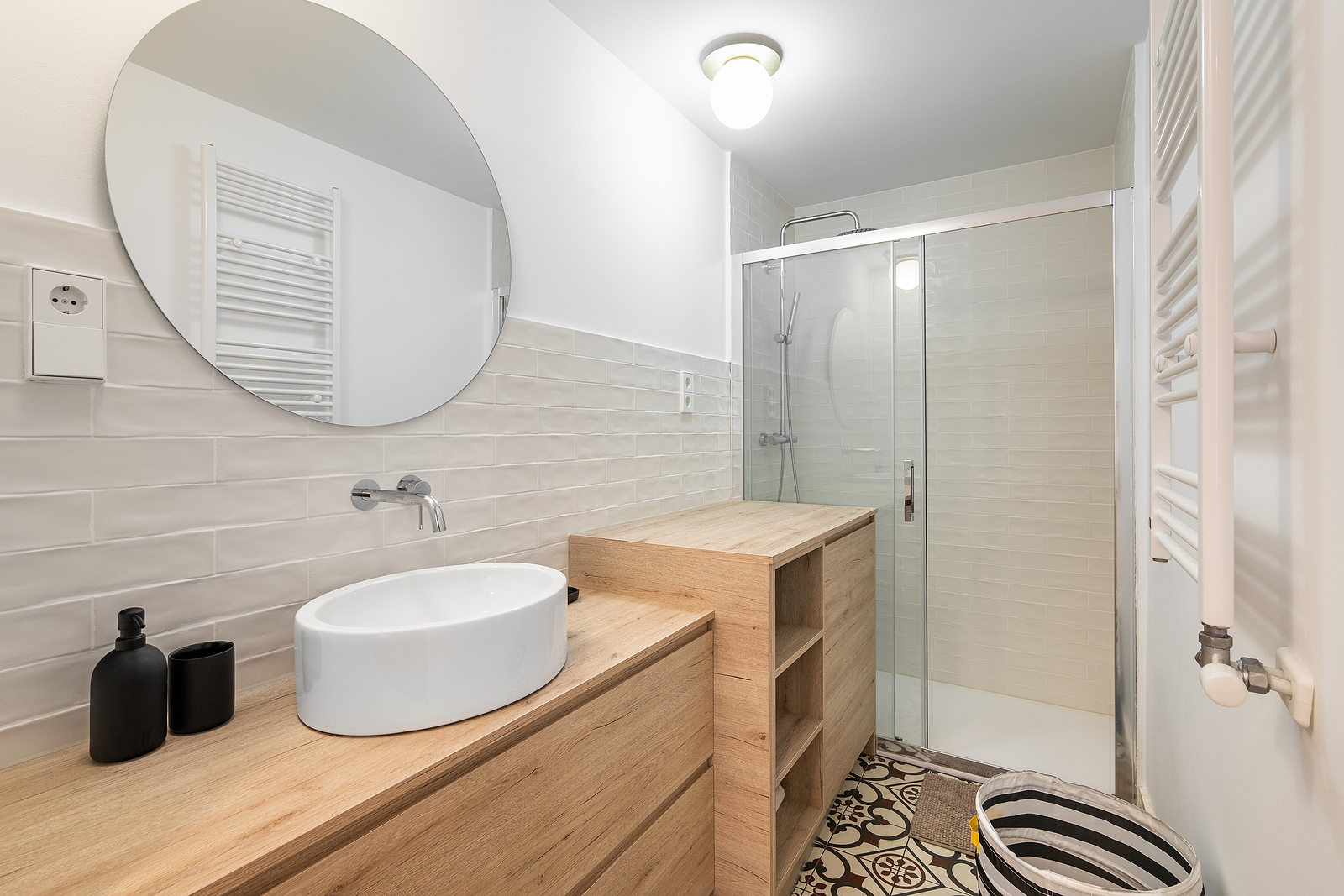Wet rooms are 100% watertight or ‘tanked’ rooms with especially designed drainage, so it is possible to install a shower without the need for a tray or enclosure. This makes them ideal for older people or people with restricted mobility, and those that require the assistance of a carer when washing.
Where can wet rooms be installed?
Wet rooms can be installed in any room in the house and on both wooden and concrete floors. They are suitable for any size of bathroom, including family bathrooms, en suites, or downstairs extensions.
What are the advantages of a wet room?
A wet room is the most fully accessible type of bathroom you can install. Walk-in showers still require some type of tray and enclosure to ensure that water doesn’t pool in the non-drainable areas of the floor. However, in a wet room the entire floor is angled so that all water runs into the shower waste underneath a waterproof membrane.
This makes them ideal for people who require full wheelchair access to the bathroom. A seat can be installed under the showering area to allow the user to directly transfer from a chair without any obstruction, and with the help of carers if necessary.
As well as ease of access, wet rooms are aesthetically pleasing, opening up smaller rooms and providing more space for using the other facilities. They are usually fully tiled from floor to ceiling, providing the opportunity to choose from some of the many beautiful tiles that are available today.
Wet room style ideas
There are several different wet room styles. Many are fully open spaces with no shower panels or screens. However if there are other sanitaryware fixtures in the room such as toilet or sink, then a screen may be installed to prevent splashing. A clear glass screen will provide this function while still allowing light to pass through and enhancing the space.
When it comes to sanitaryware, many people opt for wall hung units so that the floor space is left clear. This is ideal for drainage and makes the space easier to keep clean, as well as adding to the sense of space in the room.
Showerheads can either be ceiling or wall mounted. The type of shower you can install may depend on the type of water pressure system that you have in your home. It may be necessary to install a shower pump to give your water pressure a bit of a boost.
Ceiling mounted shower heads provide excellent coverage, as if you are standing in a heavy rain shower. However, if the bathroom is to be used by a disabled person, a detachable wall mounted shower head might be a more practical choice.
The tiling of the bathroom is of course a personal choice and there are many styles and materials available, from natural stone to fossilised wood or traditional porcelain. You may want to consider creating a feature wall with patterned tiles and sticking to plain tiles for the rest of the walls and floor.
If you are interested in finding out more information about an accessible wet room, please call us on 01491 411041 or visit our website.
24 April,2023








